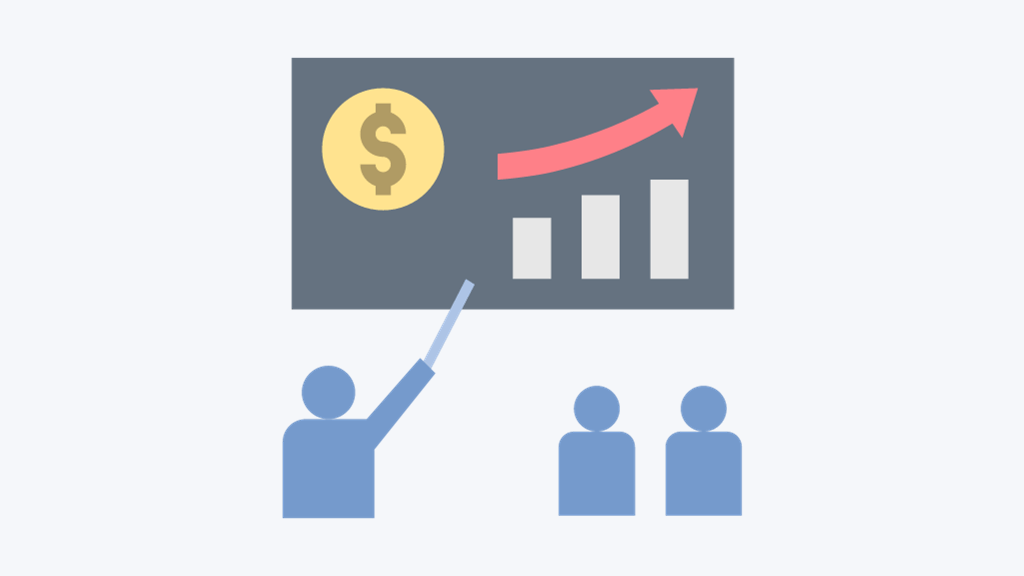On one side of the argument, there is a fervent belief in the significance of backlink quality. Many marketers contend that the sole concern when striving to enhance rankings revolves around the caliber of the backlinks being cultivated.
In their view, the quantity of backlinks becomes inconsequential as long as the generated links originate from websites boasting high domain authority.
But, is this perspective accurate?
On the opposing side, proponents champion the importance of backlink quantity. They maintain that the sheer volume of backlinks holds greater sway than their quality.
They assert that the quality of backlinks carries minimal if any, significance.
But, is this stance justified?
The objective at hand is to engage in a comprehensive discussion on this matter, with the ultimate aim of resolving this ongoing debate—albeit until any potential forthcoming algorithmic updates from Google.
What Constitutes Backlink Quality?

Within the realm of search engine optimization (SEO), a high-caliber backlink is defined as a do-follow link embedded within the body text of a page situated on a top-tier website.
This website should ideally be closely aligned with your subject matter and should direct traffic to a page on your website.
- The most exemplary backlinks are further distinguished by the presence of pertinent keywords within the anchor text of these links.
- It’s essential to acknowledge that backlink quality is assessed along a continuum, rather than being an all-or-nothing proposition.
- In essence, a link can exhibit high quality without necessarily possessing all the aforementioned attributes.
Why High-Quality Backlinks Are Advantageous?

High-quality backlinks offer clear benefits for a straightforward reason: they are, well, high-quality. This inherent quality makes them exceptionally advantageous for bolstering domain authority and enhancing SEO rankings.
When you acquire these backlinks, concerns about inadvertently affiliating with spammy websites and risking harm to your rankings become virtually obsolete.
These links exude reliability, trustworthiness, and a certain foolproof quality that is invaluable.
This aspect carries paramount importance for your overarching link-building strategy. Your objective is to ensure that your rankings are founded on ethical, genuine, substantial, and contextually relevant links leading back to your website.
Quality backlinks guarantee precisely this type of credibility. Furthermore, given their propensity to enhance domain authority, they also stand to fortify your rankings.
- In essence, quality backlinks hold value because they provide a level of certainty.
- You can be confident that the links you cultivate possess high intrinsic worth and, with time, will generate the coveted passive traffic you envision.
- Another notable advantage of high-quality links lies in their SEO value. Due to their origin from high domain authority websites, these links inherently possess greater worth compared to other backlinks.
The more high-quality links you amass, the more substantial the positive impact on your rankings.
However, while high-quality links deserve the accolades, it is equally important to explore their downsides.
In reality, it is relatively uncommon for your website to secure a link that fulfills more than just a couple of these criteria.
The Three Fundamental Aspects of High-Quality Backlinks

Determining what constitutes a high-quality backlink can be somewhat subjective. While the precise criteria employed by search engines remain undisclosed, consensus among most SEO practitioners revolves around three core elements.
1. Natural
Backlinks must exhibit a natural quality, wherein website owners link to your site of their own volition due to the value it offers to their audience. These links should not stem from paid arrangements or other manipulative tactics.
This natural approach can be likened to “earning a backlink“, as opposed to the creation of unnatural backlinks, typically motivated by an intent to deceive search engines into perceiving a website’s reputation as more favorable than it genuinely is.
In cases where Google detects unnatural or spammy backlinks, it may initially disregard them, and for recurrent infractions, penalize the website, resulting in a lower position in search engine results.
2. Reputable

In addition to being natural, backlinks should emanate from reputable sources. Contemporary search engines place great importance on the credibility of web pages, with Google employing its dedicated PageRank algorithm to assess the importance and reputation of webpages.
- PageRank functions by tallying the number and quality of links directed towards a page, providing an approximate gauge of the website’s significance.
- It presupposes that more noteworthy websites are more likely to receive numerous links from other websites.
- It is noteworthy that Google used to furnish a PageRank metric, offering a rough estimation of a webpage’s reputation.
- However, Google discontinued this practice due to spammers exploiting it as a means to purchase backlinks, a practice in contravention of Google’s guidelines.
Therefore, it is crucial to perceive PageRank as a concept or algorithm rather than a quantifiable metric.
a. The Rel Link Attribute
While discussing the reputation within search engines, it is pertinent to address the “rel attribute,” which can be appended to an HTML link.
By default, standard HTML links lack the rel attribute, permitting search engines to transfer PageRank from one page to another.
However, HTML links that incorporate values within the rel attribute often restrict the transmission of search engine reputation, or at least do not transmit the maximum possible amount.
The ‘sponsored’ rel attribute, ‘ugc’ (user-generated content) rel attribute, and ‘nofollow’ rel attribute are a few examples.
- For an extended period, the ‘nofollow’ rel attribute was the sole attribute in existence.
- In the past, the ‘nofollow’ attribute also encompassed user-generated content and sponsored links.
By incorporating the ‘nofollow’ attribute into a link, the instruction to search engines was clear: do not pass any search engine reputation, which serves as the foundation for page ranking. Nofollowed links were also not utilized for crawling or indexing.
However, following a Google update, Google introduced the ‘sponsored‘ and ‘ugc‘ rel attributes, supplementing the pre-existing ‘nofollow’ attribute. Google stated that all three could now serve as cues for crawling, indexing, and ranking.
However, it remains uncertain whether ‘nofollow’ and ‘sponsored’ attributes, for the most part, contribute to improved search engine rankings. Additionally, the efficacy of ‘ugc’ links (e.g., comments on blogs or forums) in this regard remains a subject of debate.
To ascertain if a link possesses a rel attribute, you can right-click on a link in Google Chrome and select ‘Inspect.’ This will unveil the HTML, indicating the presence or absence of a rel attribute.
In general, it is advantageous to have backlinks devoid of the rel attribute since they are more likely to transfer search engine reputation. Such backlinks are often referred to as ‘dofollow’ links.
b. Metrics Simulating PageRank

Moz introduces a Page Authority (PA) score, offering a predictive estimate of a specific page’s ranking potential on search engine result pages (SERPs). Access to the PA metric is available through Moz’s Link Explorer tool.
Similarly, Ahrefs presents a URL Rating (UR) score, which measures a target URL’s backlink profile strength and the likelihood of the URL attaining a high rank in Google.
- The UR metric is accessible through Ahrefs’ Backlink Checker.
- Both metrics resemble PageRank and operate on a logarithmic scale ranging from 1 to 100, with higher scores signifying an increased capacity to secure higher rankings.
- Therefore, backlinks with elevated PageRank scores and those devoid of a ‘rel attribute’ are more likely to transmit search engine reputation and augment a page’s ranking potential.
Although Google no longer supplies a PageRank metric, Moz and Ahrefs offer free metrics that replicate its behavior.
3. Relevant
The third pivotal component characterizing high-quality backlinks is relevance.
But what precisely does this entail?
Similar to how search engines scrutinize the reputation of both the domain and page hosting a backlink, they also evaluate the relevance of these elements. Search engines assess the relevance of both the page and domain hosting the backlink.
What Constitutes a High-Quality Link?

To ascertain the quality of a backlink, it necessitates assessment both at the individual level and within the broader context of your website’s overall backlink portfolio.
Five distinct criteria serve as benchmarks for evaluating a backlink and link profile:
- Relevance of Anchor Text
- Relevance and Quality of the Linking Page’s Content
- Quality and Relevance of the Linking Domain
- IP Address
- Link Placement
Regrettably, there are no rigid, universally applicable rules governing the evaluation of each link based on these criteria. Instead, each link must be scrutinized in isolation and within the framework of your website’s comprehensive link profile.
a. Relevance of Anchor Text
Anchor text serves as the clickable text that establishes a hyperlink between two webpages. Ideally, the destination URL should provide pertinent information pertaining to the subject matter discussed on the source page.
- Alternate terms for anchor text include link title, link text, or link label.
- In simple terms, anchor text imparts context to both users and search engines.
- The link label offers a preview of what a user can expect to find on the linked page should they choose to click on it.
- Conversely, search engines utilize anchor text for indexing and ranking web pages.
This is where the concept of relevance becomes crucial. If the content referenced by the link is unrelated to the ongoing topic, it can result in a suboptimal user experience, potentially deterring website visitors.
In the realm of search engines, this discrepancy can lead to a downgrade in rankings since the linked content fails to deliver added value to users.
Meticulous utilization of anchor text can enhance the trust your audience places in your brand and the content featured on your website. Furthermore, it bolsters your SEO endeavors by conveying the appropriate signals to search engine crawlers.
b. Link Page

We touched on this briefly in the section concerning anchor text, but the overall relevance of a page is also a pivotal factor in determining link quality.
Links originating from high-quality pages featuring content pertinent to your own page carry more link authority than links from unrelated or lower-quality pages.
Additionally, how a page fits into the overarching domain context significantly influences the link juice it imparts through backlinks.
Orphan pages, those devoid of internal links pointing to them, generally hold less value compared to non-orphan pages as they fail to convey any of the domain’s accrued authority.
Regrettably, assessing whether a linking page or domain qualifies as “quality” remains a subjective endeavor.
Numerous tools like Moz, Ahrefs, and Majestic are available for evaluation, or you can undertake this assessment personally.
To gauge page or domain quality, consider the following inquiries:
- Does the content on the linking page align with the overarching theme or niche of the entire website? The answer will hinge heavily on the website’s specific niche, necessitating your best judgment.
- Irrelevant pages on a news site, for instance, are generally inconsequential, whereas a page about online poker within a local food blog raises a red flag.
- To what extent is the content aggressively monetized? A reasonable number of ads on a page is acceptable, as publishers must sustain their efforts.
- Nevertheless, ads should not disrupt the user’s ability to read or engage with the content. Articles overloaded with affiliate links should serve as a warning sign.
- Is the site owner genuinely striving to assist users? Quality content is typically generated with the aim of delivering tangible value to visitors.
- Achieving this objective is challenging with thin, overly optimized, or scraped content.
- Consequently, a link from such a page or a website populated with such pages generally constitutes low-quality.
- Do a substantial number of your links originate from the same IP address? Specific IP addresses are not inherently indicative of poor links.
- However, acquiring numerous links from diverse domains sharing the same IP address raises concerns about the existence of a private blog network, which Google vehemently opposes.
- Keep an eye out for IP addresses originating from countries notorious for spam, like Russia, China, or India, if your business does not operate in those regions.
- Is it a unique domain? This concept aligns somewhat with IP addresses, albeit sharing the same underlying principle.
- The value of an individual backlink diminishes as the number of links from a particular domain increases.
- This does not render a link from a domain already linking to you as detrimental or worthless. Rather, new domains are more likely to pass additional link juice.
How distant is the linking domain from Google’s trusted seed sites?
Google maintains a predefined set of websites it deems trustworthy and subsequently confers trust and authority upon domains based on their proximity to these seed pages.
Therefore, a backlink originating from a page linked to by Wikipedia, for instance, holds considerably greater value than a link from a page positioned ten or twenty links away from Wikipedia.
c. Link Placement

Each link present on a page contributes a portion of that page’s link juice, albeit not all links exert the same degree of influence. The position of a link on a page significantly affects its value in the context of SEO.
A standard web page encompasses five primary sections:
- Header
- Footer
- Right sidebar
- Left sidebar
- Body content
Each of these sections may include external links channeling link juice to their respective target pages.
However, only links embedded within the body content of a page should be regarded as valuable for SEO purposes and immune to fluctuations in Google’s algorithms.
The position of a link within the body content plays a pivotal role in the extent of link juice it transfers.
Links situated higher up on a page carry greater importance to the content’s subject matter and, consequently, deliver more value to the reader. Consequently, such links convey greater value than those positioned further down the article.
The location of a link in relation to other links also influences its SEO value. The amount of link juice transmitted by a link corresponds to a page’s total link juice divided by the total number of links on that page, encompassing all nofollow links (which affect the flow of link juice).
- Consequently, a page featuring numerous links will naturally channel less value than a page with fewer links.
- Theoretically, a link within the opening paragraph of a page could convey less value than a link located at the bottom of a page hosting far fewer links.
- Furthermore, a page crowded with external links, typically exceeding 200, might be perceived as a platform designed primarily for selling backlinks. Such a scenario could prove detrimental to SEO efforts, causing more harm than benefit.
Lastly, the neighboring links that surround the link leading to your page also impact its SEO value.
Consider a page linking to your content within a list that also includes links to reputable sources like Wikipedia, the Library of Congress, and CNN.
This page will inherently possess greater value than a page featuring links alongside lower-quality sites.
Conclusion
Honestly, I don’t foresee the ongoing debate between quantity and quality in the link-building arena coming to a swift resolution.
These two approaches are inherently at odds. On one side, proponents argue in favor of amassing a multitude of links, while on the other, advocates emphasize the paramount importance of quality.
As is often the case in life, reality doesn’t neatly align with either extreme; instead, it resides somewhere in the middle. This is where genuine success thrives.
Now that you have a comprehensive understanding of the merits and drawbacks of both quality and quantity link-building strategies, know how to cultivate each, and comprehend the value of striking a balance, you are poised to embark on the journey towards realizing your vision of harnessing substantial passive traffic.




